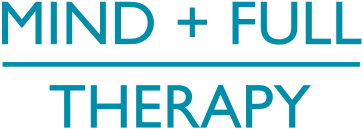Why Social Media Conflict Feels Like High School (and What We Can Learn From It)
Scroll through a heated social media thread and it’s easy to feel transported to the high school cafeteria during peak drama hour. There’s the quick escalation, the taking sides, the loud declarations, and the quiet unfriending.
It’s not just a funny coincidence. The way conflict and repair often play out on social media does look a lot like adolescent conflict patterns, and there are both psychological and structural reasons for that.
The Teen Conflict Cycle
Adolescence is a remarkable developmental phase. Teens are gaining the ability to think abstractly, question norms, and see things from new perspectives. But emotionally, they’re still works in progress. The prefrontal cortex is still developing; the part of the brain that helps regulate impulses, weigh consequences, and manage emotions. Meanwhile, the limbic system (our emotional reaction center) is highly active.
This creates a gap: they can understand complexity in theory, but in the heat of conflict, emotions tend to take the driver’s seat. With identity still under construction, even small conflicts can feel deeply personal. Even minor feedback can be received as an attack on the self, making apology or repair feel like self-betrayal instead of healthy accountability.
One major player here is the imaginary audience effect, which is the developmental tendency to believe that others are constantly watching, evaluating, and talking about you. For a teen, a disagreement with a friend isn’t just between two people, it’s a performance for the entire peer group, real or imagined. The pressure to manage image, defend status, and avoid humiliation can outweigh the desire to repair the relationship.
Here’s how it often plays out:
Trigger: A comment, tone, exclusion, or rumor sparks an emotional reaction.
Assumed Intentions: They did that to embarrass me and now everyone knows.
Emotional Flooding: Fight-or-flight kicks in; peers encourage a reactive response.
Public Performance: Confrontation happens in a visible space, recruiting allies.
Escalation: Rumors spread and old grievances surface.
Avoidance or Cutoff: Silent treatment, avoidance in shared spaces.
Superficial Repair (if any): A quick “sorry” without deeper resolution.
The Social Media Conflict Cycle: A Developmental Mirror
Social media creates a developmental mirror, it reconstructs the exact same conditions that make teen conflict so charged:
A constant, visible audience.
High sensitivity to perceived slights.
Status and belonging as central concerns.
Amplification of emotional reactions over reasoned dialogue.
In both spaces, the audience is real enough to shape behavior. Teens believe everyone is watching; online, everyone actually can be. The pressure to perform and defend image in front of others makes vulnerability (the heart of repair) feel risky.
Why Social Media Magnifies the Teen-Like Response
Social media creates an imaginary audience on steroids. The “everyone is watching me” feeling is literally true online: feeds, comments, and likes make visibility constant. It taps right into our reward circuitry with platforms designed to reward outrage, snark, and performative responses (dopamine hits), which are the exact neural levers already overactive in adolescence. Social Media creates one-sided narratives without the nuance of tone, body language, or real-time conversation, people fill in blanks about others intentions, often assuming the worst. And lastly, the identity threat is amplified when your post or comment is criticized publicly, it can feel like an attack on your whole self, just like teens experience in peer conflict.
When Adults Revert to “Teen Mode”
We like to think maturity naturally grows with age, but many adults never learned the skills for healthy conflict and repair. Without that foundation, high stress situations can trigger old patterns of prioritizing being right, saving face, or protecting identity over listening and rebuilding trust.
Social media intensifies this by rewarding quick, reactive, and emotionally charged exchanges, the same conditions that drive adolescent conflict. In a sense, it invites us to reenact high school drama, just with bigger audiences and faster rumors.
The Problem With “Impact Over Intentions”
One phrase that pops up frequently in these conflicts is:
“Impact over intentions.”
It’s meant to remind us that harm matters even when it wasn’t intended which is a helpful insight in accountability work. But when oversimplified, it can:
Shut down dialogue - “Your intentions don’t matter” leaves no room for understanding).
Trigger defensiveness - “If my intentions don’t matter, I’m defined only by the harm”.
Miss the chance to prevent future harm - understanding intent helps uncover blind spots.
In other words, it’s a starting point for awareness, not the end of the conversation.
A Better Frame: Impact and Intentions
For repair to work, we need both:
Acknowledge the Impact - Fully hear how the other person was affected, without minimizing or explaining it away.
Clarify Intentions - Share what you were trying to do, not as a defense, but to provide context and prevent future misunderstandings.
Commit to Change - Outline how you’ll handle similar situations differently next time.
This approach works whether you’re a teenager navigating a friendship or an adult navigating various relationships. It shifts the focus from winning or losing to rebuilding and learning.
Moving From Drama to Repair
Conflict isn’t inherently bad, it’s part of every relationship. But when it’s managed like a high school hallway showdown, we miss opportunities for growth. Whether online or offline, the real work is learning to slow down, regulate our emotions, and approach the other person with curiosity.
Because if we don’t? We risk spending our adult lives fighting like we’re still in the cafeteria with the whole school watching.
If you noticed that conflict leaves you feeling stuck, misunderstood, or emotionally flooded, therapy can help you build the tools for repair, self-regulation and deeper connection.
At Mind+Full Therapy, we specialize in helping adults untangle old patterns, understand their emotional responses and communicate with clarity and confidence. Whether you’re navigating personal relationships, workplace dynamics you don’t have to do it alone.
Reach out today to start your journey toward calmer, healthier conflict resolution and stronger connections.

